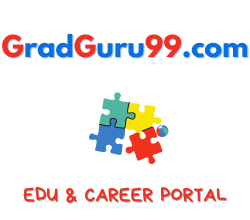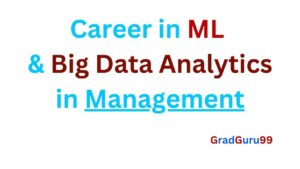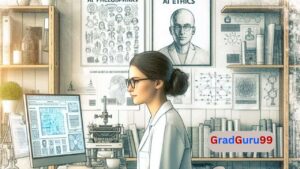The Internet of Things (IoT) is revolutionizing how we interact with the world around us. This guide provides a comprehensive roadmap for beginners to embark on their IoT learning journey. It covers essential concepts, tools, languages, and resources to build a strong foundation in this exciting field.
Learning IoT as a Beginner – A Step-by-Step Guide
The Internet of Things (IoT) refers to the network of physical devices embedded with sensors, software, and other technologies that collect and exchange data. These connected devices range from smart home appliances to industrial sensors, creating a vast ecosystem of interconnected intelligence.
Definitions:
- Sensor: A device that detects and measures physical or environmental conditions, such as temperature, light, or pressure.
- Actuator: A device that converts a digital signal into a physical action, such as turning on a light or opening a valve.
- Microcontroller: A small, single-chip computer used to control electronic circuits in IoT devices.
- Connectivity Protocol: A set of rules that govern how devices communicate with each other over a network (e.g., Wi-Fi, Bluetooth).
- Cloud Platform: A remote server infrastructure that stores, manages, and analyzes data collected from IoT devices.
Examples:
- Smart home devices: Thermostats that adjust the temperature automatically, smart speakers controlled by voice commands, and security systems that send alerts.
- Wearable technology: Fitness trackers that monitor heart rate and activity levels, smartwatches for notifications and payments, and health monitors for chronic conditions.
- Industrial IoT (IIoT): Sensors in factories that monitor machine health for predictive maintenance, connected agriculture systems for optimizing crop yields, and smart grids for managing energy consumption.
Tools:
- Development Boards: Platforms like Arduino and Raspberry Pi provide affordable hardware with built-in features for connecting sensors and actuators, and easy-to-use programming environments.
- Cloud Platforms: Services like AWS IoT Core, Microsoft Azure IoT Hub, and Google Cloud IoT Core offer tools for managing and analyzing data collected from IoT devices.
- Simulation Tools: Software like Proteus and MATLAB allow for virtual prototyping of IoT systems, enabling testing and debugging before physical implementation.
Primary Vendors:
- Amazon Web Services (AWS): Offers a comprehensive suite of IoT services including device management, data analytics, and machine learning. https://aws.amazon.com/iot/
- Microsoft Azure: Provides a secure and scalable platform for managing and building IoT solutions with integration to other Azure services. https://azure.microsoft.com/en-us/products/iot-hub
- Google Cloud Platform (GCP): Delivers secure and reliable infrastructure for IoT applications, with features for device management and data analysis. https://cloud.google.com/iot-core
Languages and Software:
- C: A powerful and efficient language often used for low-level programming of embedded systems in IoT devices.
- Python: A popular high-level language gaining traction in IoT development due to its simplicity, vast libraries, and machine-learning capabilities.
- JavaScript: Used for web development and increasingly employed for building user interfaces and applications that interact with IoT devices.
- Development Frameworks: Frameworks like Arduino IDE and Eclipse provide tools and libraries specifically designed for developing and deploying IoT applications.
Benefits of Learning IoT:
- Increased Career Opportunities: The demand for skilled IoT professionals is growing rapidly across various industries.
- Enhanced Problem-Solving Skills: Learning IoT fosters creative thinking and the ability to design solutions for real-world challenges.
- Understanding of Connected Future: IoT skills equip individuals to navigate and contribute to the increasingly interconnected world.
References:
- Growing Demand for IoT Professionals:
https://www.forbes.com/sites/forbestechcouncil/2022/10/20/how-iot-is-playing-a-key-role-in-production-uptime/ (This report by Forbes highlights the increasing demand for IoT professionals) - Getting Started with Arduino: https://www.arduino.cc/ (The official Arduino website offers a wealth of resources for beginners, including tutorials and project ideas)
- Cloud Platforms for IoT: https://aws.amazon.com/iot-core/ (This AWS course provides an introduction to building IoT applications on the AWS Cloud platform)
Milestone Charter:
This table outlines a sample learning path for IoT beginners, with achievable milestones and estimated timelines.
| Milestone | Description | Estimated Time |
|---|---|---|
| Foundational Knowledge | Understand core IoT concepts, definitions, and applications. | 1-2 Weeks |
| Hardware Basics | Familiarize with development boards like Arduino and Raspberry Pi. | 2-3 Weeks |
| Programming Fundamentals | Learn basic programming concepts using Python or C. | 4-6 Weeks |
| Connectivity Protocols | Understand common protocols like Wi-Fi and Bluetooth for IoT communication. | 1-2 Weeks |
| Cloud Platforms | Explore introductory courses on cloud platforms for IoT (e.g., AWS, Azure, GCP). | 2- |
Conclusion:
Embarking on an IoT learning journey opens doors to a dynamic and transformative field. By following this roadmap, beginners can gain the fundamental knowledge and skills to build their expertise and contribute to the exciting future of the Internet of Things.


